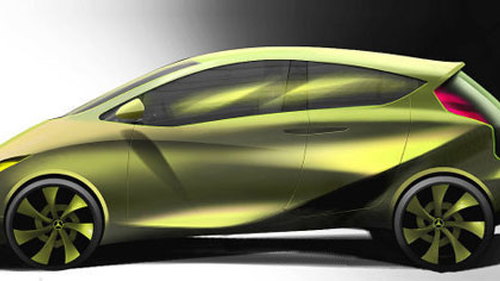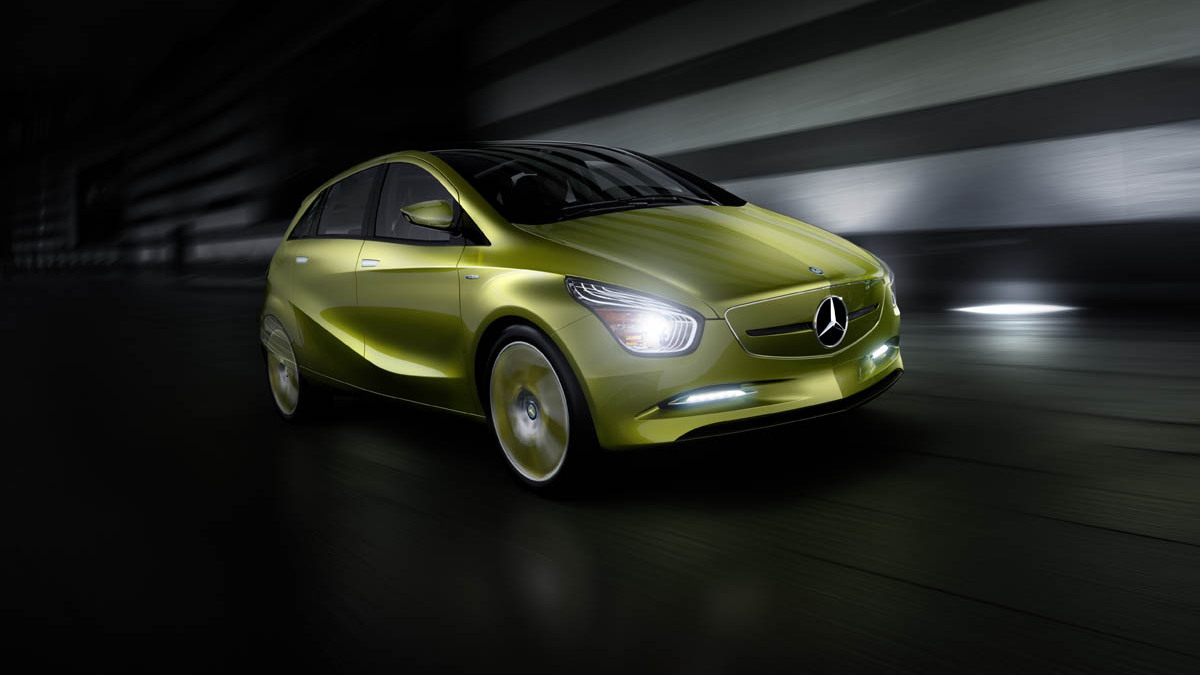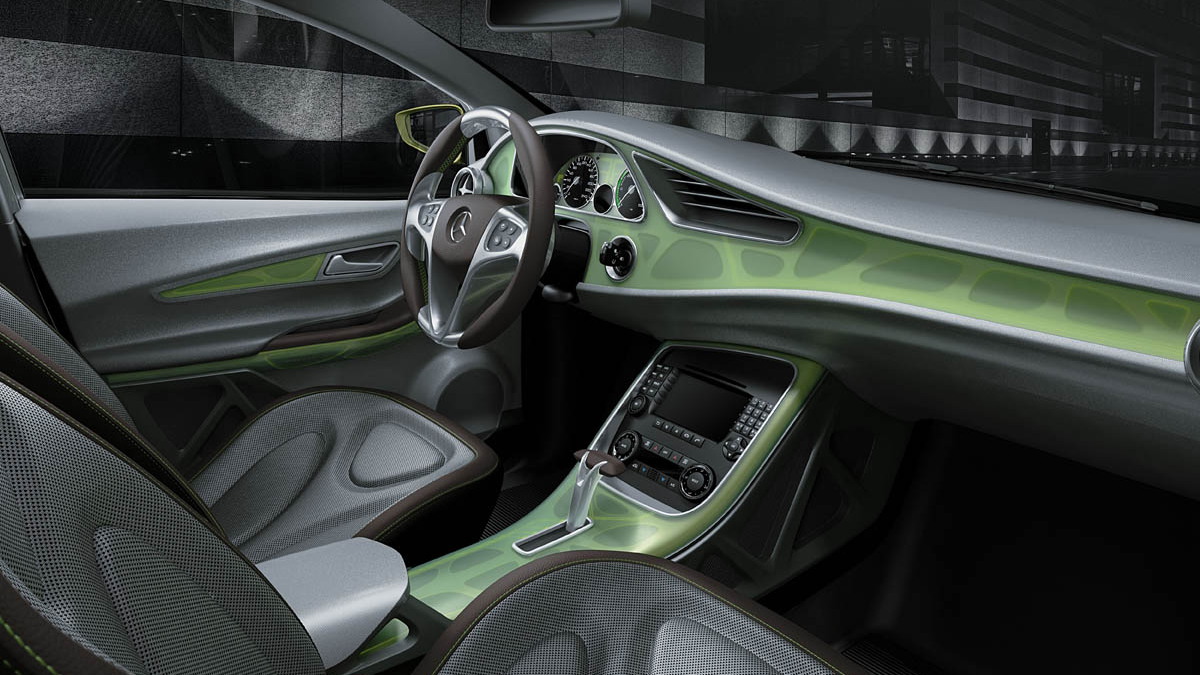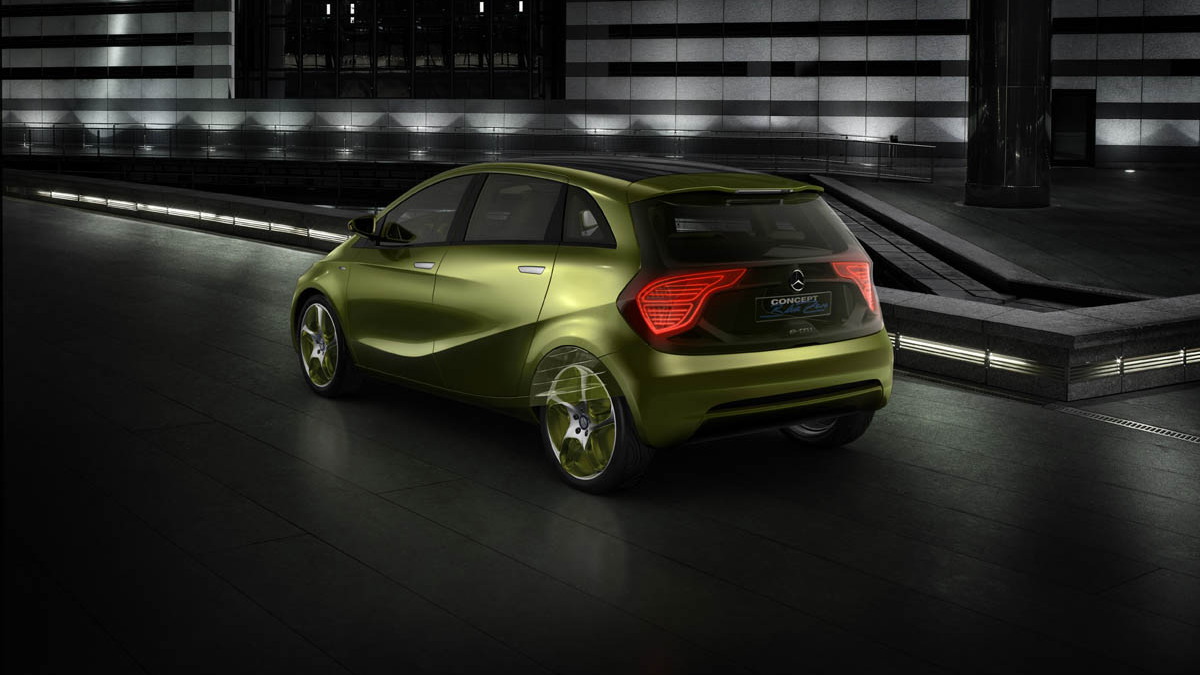The concepts are called the E-Cell, F-Cell and E-Cell Plus, all of which offer slightly different takes on the electric vehicle concept but feature the same exterior design and overall 13.85ft (4.22m) length.
The E-Cell uses a pure-ev design, with lithium-ion batteries and electric motors doing all of the work. The E-Cell Plus uses lithium-ion batteries and electric motors to drive the wheels, but also features a petrol-powered engine to charge the batteries for greater range between charges. Both the E-Cell and E-Cell Plus can store enough energy for a range of 30 miles within 30 minutes. Finally, the F-Cell uses hydrogen fuel cells to power the electric motors.
Though the BlueZERO name might indicate to the casual observer that the trio is designed as a range of zero-emissions products, only the E-Cell and F-Cell will have zero tailpipe emissions - the E-Cell Plus, like any other plug-in hybrid, will emit standard exhaust when the charging engine is in operation, though at a very low rate of 32g/km CO2. To be fair, both the F-Cell and E-Cell will also involve carbon emissions in the creation of electricity or hydrogen used to power them.
The E-Cell claims a 120mi (200km) range on a one-hour charge or 240mi (400km) on a two-hour charge, while the E-Cell Plus is reportedly good for a range of 370mi (600km) on a tank of fuel and a charge, or 60mi (100km) in electric-only mode, translating to a NEDC fuel consumption of 62 mpg (US 51mpg/4.6L/100km). The E-Cell Plus gets its gasoline-powered miles courtesy of the 67hp (50kW) three-cylinder turbo engine found in the Smart ForTwo. The F-Cell's hydrogen tank holds enough of the fuel for a range of 248mi (400km) from the car's 120hp (90kW) electric motor.
Many steps have been taken to optimize the cars' aerodynamics and overall efficiency, including wheels that minimize wind resistance and tires that reduce rolling resistance. A closed front fascia also minimizes drag, much like that of Chevrolet's Volt plug-in hybrid.
Other high-tech features include the lights at either end of the car. Combining cutting edge lens and LED bulb technologies, the car's lights feature a bright center with slightly diffused edges. Up front, daytime running lights are shaped into a 'C', while at the rear, the taillights form an 'L' shape. Extensive use of Lexan also offers a chance to make many surfaces translucent, such as the rear tailgate, which gives a clear view into the vehicle's interior.
Though all three cars will share the same basic design, a range of three 'ALU-BEAM' metallic colors has been chosen to highlight their differences. The E-Cell, pictured, gets a 'fresh lime green' variant, while the F-Cell gets a mint green exterior and the E-Cell Plus will be colored bright orange.
The design of the E-Cell concept (pictured) is thought to preview the features of the next A-Class and B-Class, and also draws on the design of the original 2005 Bionic car concept.





